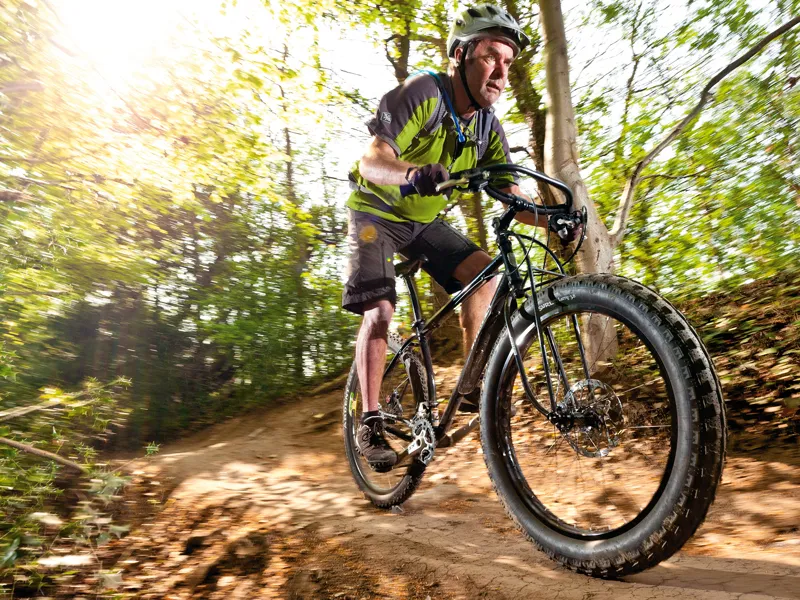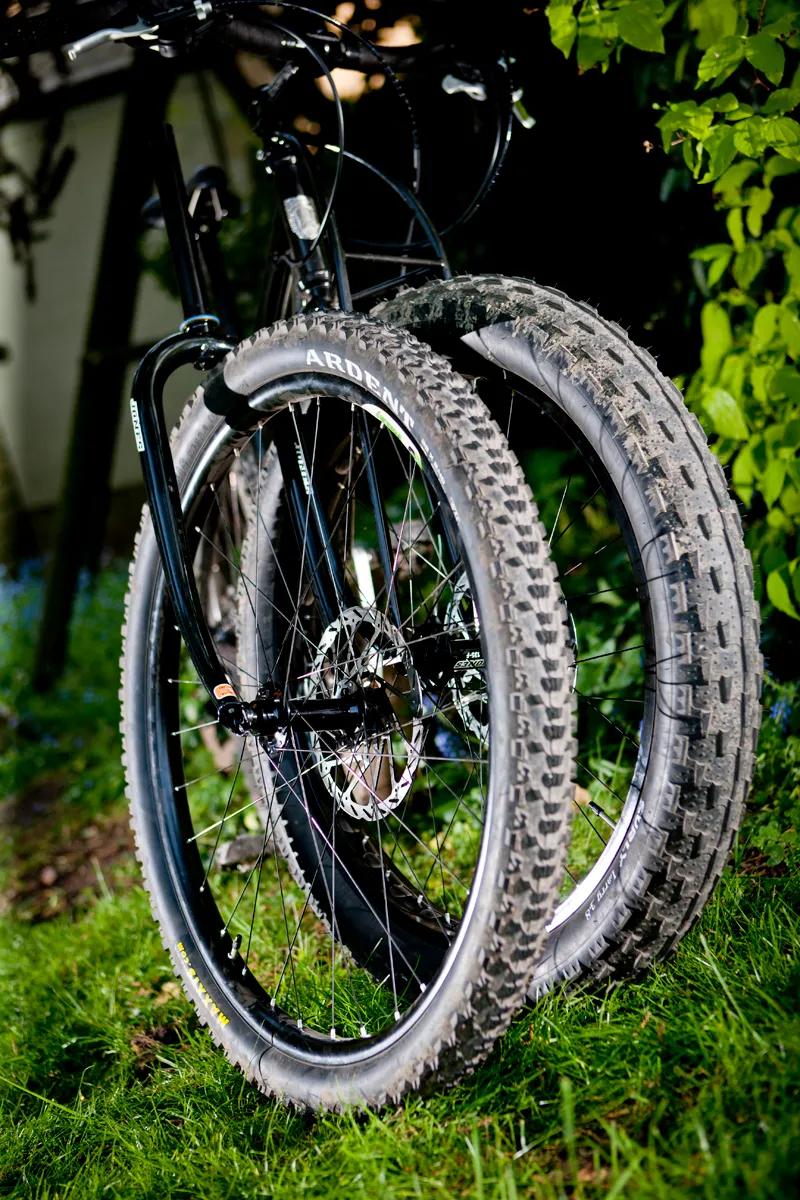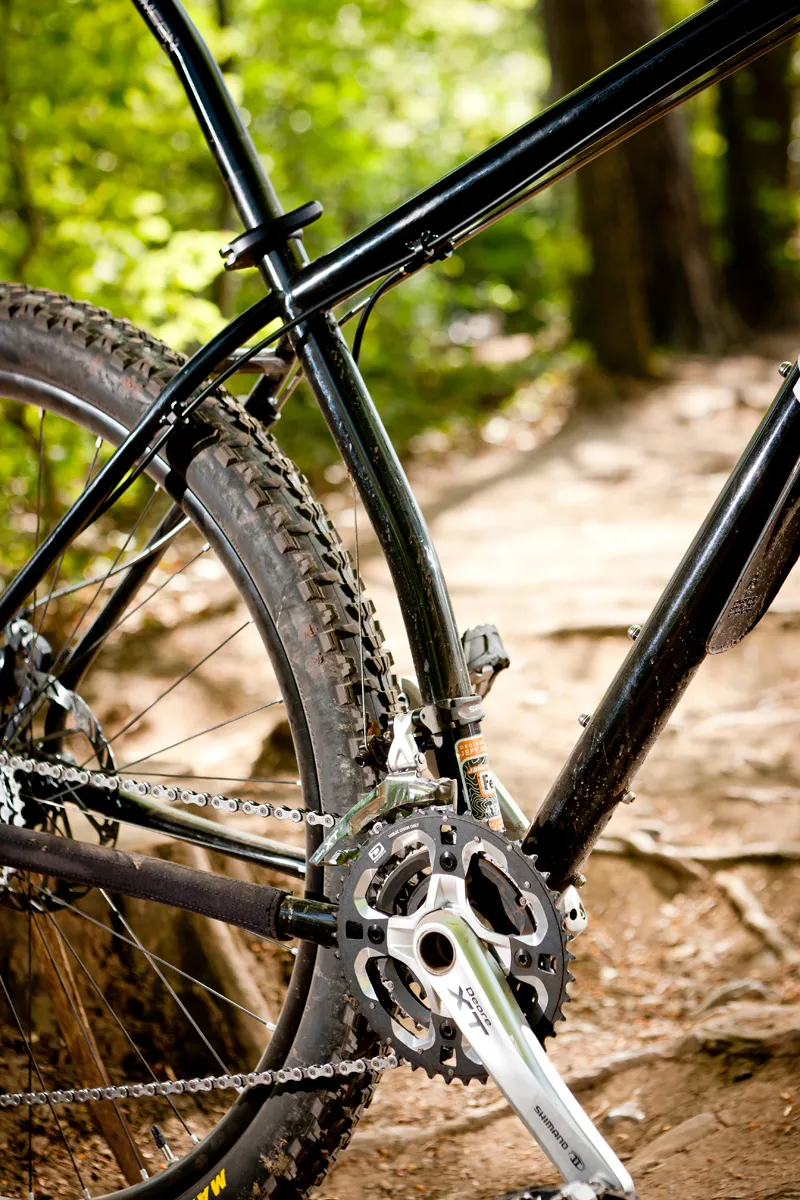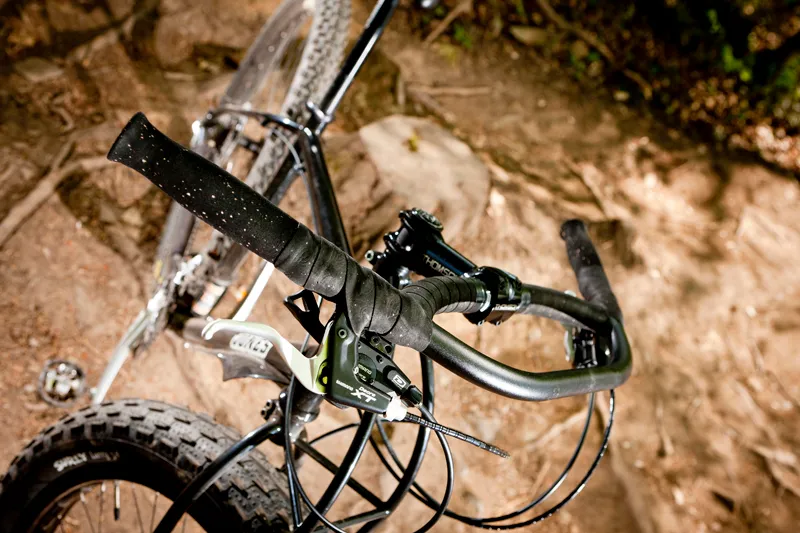The last Jeff Jones machine we tested confounded those who didn’t ride it, and a few of those who did – partly because it's so costly (£2,800 for frame and fork) but mainly because Jones’s unique titanium SpaceFrame and Truss fork is a freaky looking chassis that engenders a greater love/hate aesthetic juxtaposition than any other bike we’ve tested.
The SpaceFrame is now available in a steel version too, but if you want the Jones experience on a tight budget, it's the more conventional-looking Diamond frame tested here that you should be looking at. Available with Jones’s unicrown fork for around £800, or his steel Truss fork for £300 more, and with the option of a super-fat front wheel, it's an adaptable machine with a ride personality that surprises and seduces.
Ride & handling: Best comfort and control of any rigid steel bike we've tested
This is definitely a bike you need to ride to appreciate. The harder you ride it, the more it'll impress. This contradicts first impressions, because the laid back seat tube and fairly high-set swept-back handlebar make it feel like a casual cruiser when you first set off. The easy roll of the big wheels and fat tyres emphasises that, but as soon as you hit rough terrain you start to realise that there’s a lot more going on here than just big wheels and tyres.
We suspect that most buyers will opt for the cheaper and more conventional-looking unicrown fork. It’s a superb piece of kit, and more precise in handling responses than almost any other conventionally shaped rigid fork we’ve tried. However, it’s not as well controlled or as comfortable as the Truss fork on the really bumpy stuff. Here, the frontal brace tubes on the Truss fork muffle the judder you get from other rigid forks over bumps and/or under hard braking and take the edge off trail shocks more effectively than any other non-suspension fork.
Big tyres help too. We suspect most riders will opt for the standard 29in front wheel but the ride feel of the optional double width wheel and 3.8in Surly Larry tyre (see below) is amazing. With the tyre inflated to about 12psi it simply absorbs rocks and roots into the tyre mass without diving like a suspension fork. This makes for a very stable handling feel over rough trails.
The relaxed, sat-back ride position naturally helps you to use your bent legs and arms as an integral part of shock taming: the old fashioned way if you like, but a lot easier than it ever used to be on an old-school rigid bike. Monster tyre traction is so good that it makes you want to accelerate and lean hard into corners just for the hell of it. It obviously adds extra comfort too, but doesn’t substantially increase drag or alter the front-end handling, despite the fact that it weighs more.
Jeff Jones has effectively reinvented rigid mountain bikes. Okay, you can make a rigid chassis bike fun and comfy to ride just by fitting big tyres, but Jeff has taken things far further, tweaking geometry and taking a whole new approach to fork design. His steel and titanium SpaceFrames will never appeal to the masses, but one of the combinations tested here should be tried by every enthusiastic mountain biker. Despite, or because of, its lack of air/coil sprung suspension, it makes you realise why skin-of-the-teeth trail riding is so much fun. And the remarkable thing is that we were thrashing through all of our favourite trails at almost exactly the same speed as we do on 5in-travel full-sussers.
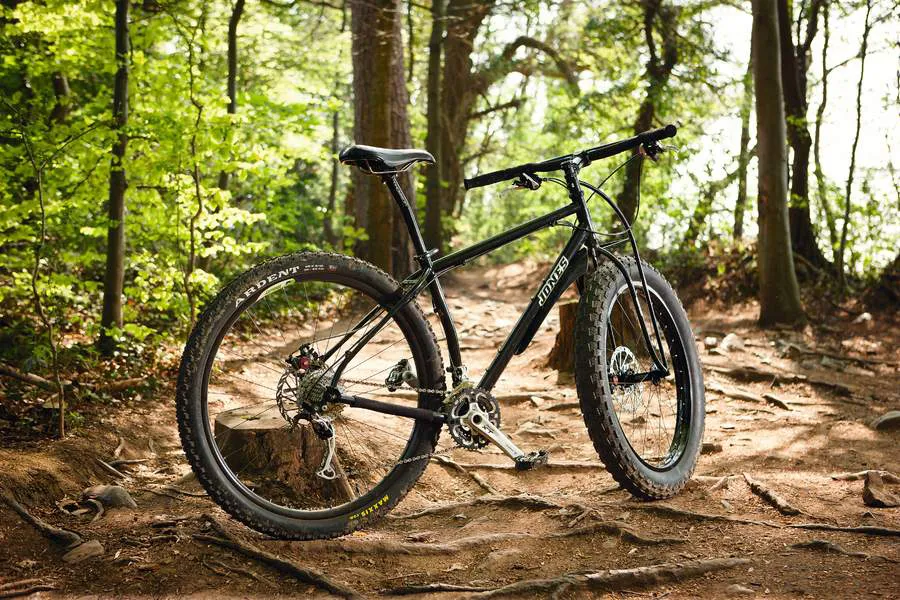
Frame & equipment: Quirky chassis plus your choice of finishing kit
To cut a long story short (see www.jonesbikes.com for the long story), Oregon, US-based Jeff Jones has made it his quest to create the best non-suspension mountain bike chassis on the planet. He's probably managed it with his unique titanium Spaceframe and Truss fork, but its sky-high price is a deterrent to most. The almost conventional looking steel option is the cheapest way of investing in the Jones mindset. We say ‘almost conventional’ because it still has some quirks, most notably in fork choice.
Built in Taiwan to Jones’s criteria using custom-butted steel, comfort and handling is dictated by a laid back but remarkably power-efficient ride position, curved tubing where appropriate, big tyred 29in wheels and Jones’s distinctive handlebar. Oh, and that fork: the skinny-tubed Truss fork inevitably attracts comments but it adds a remarkable amount of front-end comfort. If you just can’t handle the looks and comments you can go for the slightly heavier, fat unicrown fork.
Both options are built to take Jones’s 135mm wide-bodied hub, which can be built into a standard 29er rim or a double width rim plus Surly’s Larry 3.8in tyre, adding 800g of heft to the front compared to a regular 29er Velocity rim with a Maxxis Ardent 2.4in tyre. Inevitably the super-fat rim and tyre also add extra elements of fun, shock absorption and bemused pit-stop commentary.
The frame, which wears an incredibly tough black powdercoat, has three lots of bottle cage bosses and Crud Catcher mudguard bosses, which are brazed rather than welded. A Bushnell eccentric bottom bracket allows you to adjust axle height and chain tension: Jones supplies a gear hanger and single sprocket dropouts.
There’s enough clearance for 2.55in tyres and the seat tube is curved so that the front mech sits clear of the tyre and the post is well back. Skinny, curvy stays take the edge off shocks. Jones only offers one frame size at present, but the laid back seat tube changes the reach to the bars as you put the saddle up or down. A choice of inline or layback posts, bar sweep and stem length allows this single frame to suit riders from around 5ft 5in to over 6ft.
Our guess is that those who aren’t attracted to the Truss fork may well baulk if presented with Jones handlebars. All we can say is you should keep an open mind. The curved forward then swept back H-Bar is almost an integral part of the chassis design. It puts your hands in a position that seems to get the most relaxed, confident handling from the way your weight spreads across the bike without interfering with power transfer.
Not convinced? We were sceptical too but it’s worth persevering. The H-Bar also offers a comfy centre bar, road bike-style climbing position and a forward extension for cruising. But the bar and all the rest of the kit are down to choice. Our test bike was built with a Shimano Deore XT drivetrain and Avid cable disc brakes. With Velocity 29er rims and Maxxis Ardent 2.4in tyres it tipped the scales at just under 29lb with the Truss fork, just over 29lb with the unicrown fork and just over 30lb with the super-fat wheel.

